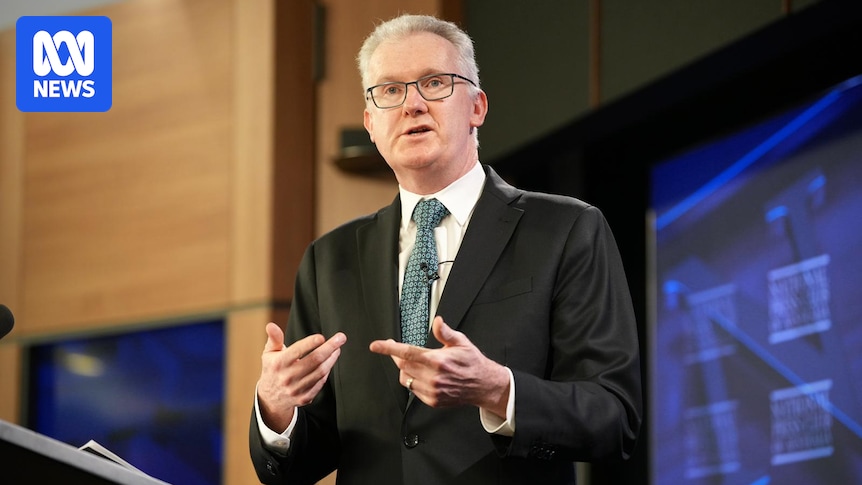This article is an on-site version of our FirstFT newsletter. Subscribers can sign up to our Asia, Europe/Africa or Americas edition to get the newsletter delivered every weekday morning. Explore all of our newsletters here
Good morning and…

This article is an on-site version of our FirstFT newsletter. Subscribers can sign up to our Asia, Europe/Africa or Americas edition to get the newsletter delivered every weekday morning. Explore all of our newsletters here
Good morning and…

PASCAGOULA, Miss., (Dec. 29, 2025) — HII’s (NYSE: HII) Ingalls Shipbuilding division has delivered Arleigh Burke-class guided missile destroyer Ted Stevens (DDG 128) to the U.S. Navy. This marks the second Flight III Arleigh Burke-class destroyer to be delivered by Ingalls shipbuilders.
“The delivery of Ted Stevens reflects the strong momentum of our destroyer program as we accelerate Flight III production and bring enhanced capabilities to the fleet,” said Brian Blanchette, Ingalls Shipbuilding president. “We are honored to deliver DDG 128 to the Navy knowing that it will stand as a powerful asset in strengthening U.S. maritime security for decades to come.”
The future USS Ted Stevens represents the next generation of surface combatants for the U.S. Navy, featuring the second-in-class Flight III AN/SPY-6 (V)1 radar system and the Aegis Baseline 10 combat system, designed to counter threats well into the 21st century.
At Ingalls Shipbuilding there are four more Flight III destroyers under fabrication and another seven moving through early pre-planning stages of construction. To increase the throughput and meet the increased demand for ships by the U.S. Navy, Ingalls recently embarked on a distributed shipbuilding initiative to improve schedule adherence for all ships built at Ingalls by partnering with shipyards and fabricators beyond the company’s traditional labor market.
To date, Ingalls Shipbuilding has delivered 36 Arleigh Burke-class destroyers to the U.S. Navy, including the first Flight III, USS Jack H. Lucas (DDG 125) and Ted Stevens (DDG 128). The four Flight III destroyers under construction include: Jeremiah Denton (DDG 129), George M. Neal (DDG 131), Sam Nunn (DDG 133), and Thad Cochran (DDG 135). Additionally, Ingalls is in early pre-planning and material procurement phases for John F. Lehman (DDG 137), Telesforo Trinidad (DDG 139), Ernest E. Evans (DDG 141), Charles French (DDG 142), Richard J. Danzig (DDG 143), Intrepid (DDG 145) and Robert Kerrey (DDG 146).

The B-52s flourished long before Uniting Voices Chicago member Stella Corotis was even born — and yet she grew up on them and…

HOUSTON and TUPELO, Miss., Dec. 29, 2025 /PRNewswire/ — Cadence Bank (NYSE: CADE) will release its fourth quarter 2025 earnings and annual financial results on Thursday, January 22, 2026, prior to the opening of the financial markets. The release will be found on the company’s investor relations website and distributed on PR Newswire.
About Cadence Bank
Cadence Bank (NYSE: CADE) is a $53 billion regional bank committed to helping people, companies and communities prosper. With more than 390 locations spanning the South and Texas, Cadence offers comprehensive banking, investment, trust and mortgage products and services to meet the needs of individuals, businesses and corporations. Accolades include being recognized as one of the nation’s best employers by Forbes and U.S. News & World Report and as a 2025 America’s Best Banks by Forbes. Cadence has dutifully served customers for nearly 150 years. Learn more at www.cadencebank.com. Cadence Bank, Member FDIC. Equal Housing Lender.
SOURCE Cadence Bank

Let’s be real here—Apple knows exactly how to create FOMO, and their latest Japanese New Year promotion is a masterclass in exactly that strategy. Starting January 2nd through 5th, 2025, the company is rolling out what might be their most…

Fellow boxer Chris Eubank Jr was among those to pay tribute to Ghami and Ayodele, calling them “genuinely good men”.
The British middleweight said:, external “Thank god our heavyweight champ survived that horrible car crash. And pray for the two…

All Hail, Mama Ru is back to brighten up your 2026! We can confirm that a brand-new series of RuPaul’s Drag Race UK vs The World is due to strut its way back onto your screens in the new year.
Featuring a heady mix of fan favourite queens from…
